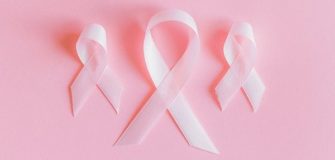Fighting COVID with COVID
Share
What if the COVID-19 virus could be used in fighting against itself? Researchers at Penn State have designed a proof-of-concept therapeutic that may be able to do just that. The team designed a synthetic defective SARS-CoV-2 virus that is innocuous but interferes with the real virus’s growth, potentially causing the extinction of both the disease-causing virus and the synthetic virus.
“In our experiments, we show that the wild-type [disease-causing] SARS-CoV-2 virus actually enables the replication and spread of our synthetic virus, thereby effectively promoting its own decline,” said Marco Archetti, associate professor of biology, Penn State. “A version of this synthetic construct could be used as a self-promoting antiviral therapy for COVID-19.”
Archetti explained that when a virus attacks a cell, it attaches to the cell’s surface and injects its genetic material into the cell. The cell is then tricked into replicating the virus’s genetic material and packaging it into virions, which burst from the cell and go off to infect other cells.
‘Defective interfering (DI)’ viruses, which are common in nature, contain large deletions in their genomes that often affect their ability to replicate their genetic material and package it into virions. However, DI genomes can perform these functions if the cell they’ve infected also harbors genetic material from a wild-type virus. In this case, a DI genome can hijack a wild-type genome’s replication and packaging machinery.
“These defective genomes are like parasites of the wild-type virus,” said Archetti, explaining that when a DI genome utilizes of a wild-type genome’s machinery, it also can impair the wild-type genome growth.
In addition, he said, “given the shorter length of their genomes as a result of the deletions, DI genomes can replicate faster than wild-type genomes in coinfected cells and quickly outcompete the wild-type.”
Indeed, in their new study, which published July 1 in the journal PeerJ, Archetti and his colleagues found that their synthetic DI genome can replicate three times faster than the wild-type genome, resulting in a reduction of the wild-type viral load by half in 24 hours.
To conduct their study, the researchers engineered short synthetic DI genomes from parts of the wild-type SARS-CoV-2 genome and introduced them into African green monkey cells that were already infected with the wild-type SARS-CoV-2 virus. Next, they quantified the relative amounts of the DI and WT genomes in the cells over time points, which gave an indication of the amount of interference of the DI genome with the wild-type genome.
The team found that within 24 hours of infection, the DI genome reduced the amount of SARS-CoV-2 by approximately half compared to the amount of wild-type virus in control experiments. They also found that the the DI genome increases in quantity 3.3 times as fast than the wild-type virus.
Archetti said that while the 50% reduction in virus load that they observed over 24 hours is not enough for therapeutic purposes, presumably, as the DI genomes increase in frequency in the cell, the decline in the amount of wild-type virus would lead to the demise of both the virus and the DI genome, as the DI genome cannot persist once it has driven the wild-type virus to extinction.
He added that further experiments are needed to verify the potential of SARS-CoV-2 DIs as an antiviral treatment, suggesting that the experiments could be repeated in human lung cell lines, and against some of the newer variants of SARS-CoV-2. Furthermore, he said, an efficient delivery method should be devised. In further work that is still unpublished, the team has now used nanoparticles as a delivery vector and observed that the virus declines by more than 95% in 12 hours.
“With some additional research and finetuning, a version of this synthetic DI could be used as a self-sustaining therapeutic for COVID-19.”
Other Penn State authors on the paper include Shun Yao, postdoctoral scholar in biology; Anoop Narayanan, associate research professor of biochemistry and molecular biology; Sydney Majowicz, graduate student in molecular, cellular, and integrative biosciences; and Joyce Jose, assistant professor of biochemistry and molecular biology.
The Huck Institutes of the Life Sciences at Penn State supported this research.
Story Source: Materials provided by Penn State. Note: Content may be edited for style and length.
Based on a city where the mountain meets the sea and where antique houses line the streets, my mind is free to wonder, to wander and to write.












